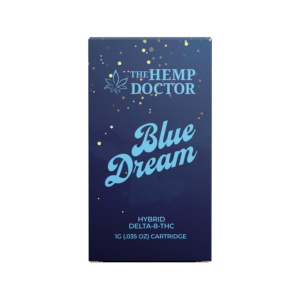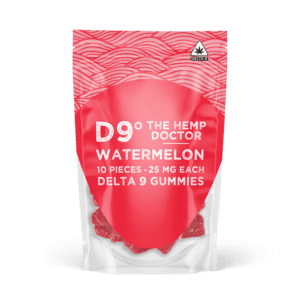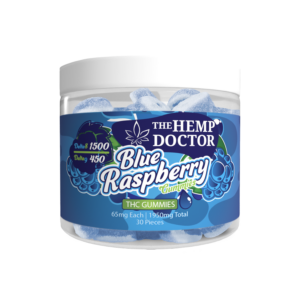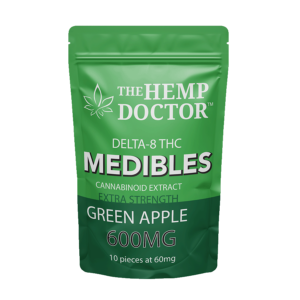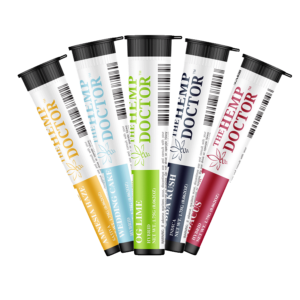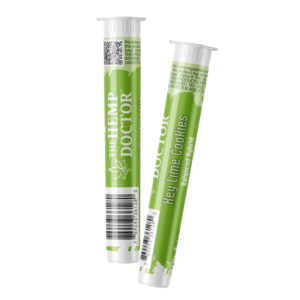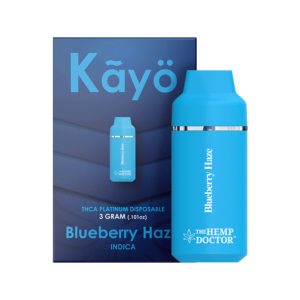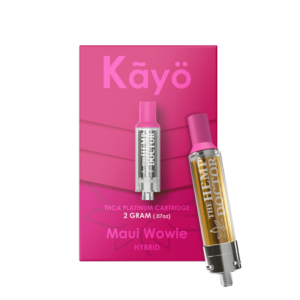THC wax is a concentrate with THC levels that can skyrocket past 80%. It’s a favorite among cannabis enthusiasts who love dabbing and vaping, but what about eating it? Can wax be edible? Can you simply pop a piece of wax in your mouth and get high?
The answer is more complex than you might think. In this guide, we’ll break down everything you need to know about whether it’s possible to eat and get high with cannabis waxes or leave it as is.
Let’s dive in!
What Exactly Is THC Wax?
THC wax is a concentrated cannabis extract known for its high potency and wax-like or sometimes crumbly consistency. It’s produced by extracting cannabis compounds (cannabinoids and terpenes) from hemp plant materials through solvents like butane, CO2, or ethanol. At the end of the process, it leaves behind a sticky, resinous substance packed with THC.
There are several types of THC waxes available in the concentrates market, which are often differentiated by consistency and how they’re processed.
- Shatter – A glass-like, brittle concentrate
- Budder – Soft, creamy, butter-like texture
- Crumble – Dry, crumbly, honeycomb-like consistency
- Live Resin – Made from fresh or frozen cannabis, retaining high terpene content
- Rosin – Solventless extract pressed from flower or hash
- Honeycomb – Light, porous, waxy concentrate
- Sugar Wax – Gritty, sugar-like consistency
Regardless of texture, THC wax or other variants, like Delta 8 concentrates, is exceptionally potent, dancing between 70–90% THC.
THC waxes are consumed primarily by vaping and dabbing. Both deliver highly potent effects, with the method being the only difference. Vaping offers portability, while dabbing provides a more traditional take on THC wax consumption.
Some swear that THC wax isn’t just for dabbing or vaping. Many cannabis enthusiasts wonder: Can you actually eat THC wax?
Can You Eat THC Wax? The Science Behind It
When you think about it, eating THC wax may seem like a shortcut to an intense edible experience. However, it’s not that simple. The raw extract contains THCA (tetrahydrocannabinolic acid), which is the non-psychoactive precursor to THC. This means that, in its natural state, THC wax won’t deliver the intoxicating effects most people expect.
For THC wax to work as an edible, it must undergo decarboxylation—a fancy term for applying heat to convert THCA into active THC. This process usually happens when vaping or dabbing wax, but if you plan to consume it as an edible, you’ll need to decarb it first. Otherwise, you’re just swallowing an expensive, non-psychoactive concentrate!
To consume THC wax safely, people decarb (or heat) THC wax before incorporating it into food recipes, mainly baked goods. They start mixing with the smallest amount first before deciding to add a bit more for the next batch of the batter.
Here are some of the foods and drinks THC waxes are popularly added to:
Savory
- Butter-based dishes
- Olive oil & coconut oil
- Sauces and dressings
- Soups
Sweets
- Baked goods
- Chocolate
- Honey
- Peanut butter
Drinks
- Coffee and tea
- Smoothies
- Mocktails (never add to alcoholic beverages)
How to Make THC Wax Edible: Decarbing the Right Way
To activate the THC, you’ll need to decarboxylate (heat) the wax before mixing it into your food. The easiest way to decarboxylate THC wax is to melt it into butter or oil over low heat (around 200-220°F) for about 20-30 minutes. Once infused, it’s ready to be used in your favorite recipes.
Here are step-by-step instructions on how to do it:
| Ingredients & Tools to Prepare: OvenHeat-resistant dishButter, oil, or honey (either) |
Step 1: Prepare Your Wax for Decarboxylation
Prepare your oven and a heat-resistant dish. The goal is to gently heat the wax without burning it.
- Preheat your oven to around 220–240°F (104–115°C).
- Place the THC wax in an oven-safe dish, preferably one with high sides to prevent bubbling over.
- Bake for 30–45 minutes. Stir occasionally to ensure even exposure of the wax to heat.
After the THC wax darkens and bubbles, this is a signal that your THC wax has been activated and is ready to be infused into edibles!
Step 2: Infusing Decarbed Wax into Food or Edibles
Now that your THC wax is decarbed, proceed to mix it into butter, oil, or even honey for use in homemade edibles. Just remember that THC waxes are highly concentrated, and a tiny dab goes a long way.
- Melt your preferred fat (butter or coconut oil) over low heat.
- Stir in the wax until fully dissolved.
- Let it cool, then use it in baking treats or cooking savory dishes.
Eating Raw THC Wax vs. Infused Edibles: What’s the Difference?
If you eat raw THC wax without decarboxylating it, you likely won’t feel much—aside from an odd texture in your mouth and possibly a stomachache if you consume too much. That’s because the THCA remains inactive, meaning you won’t experience its psychoactive effects.
On the other hand, when properly decarbed and infused into food, THC wax delivers a powerful, long-lasting high similar to traditional cannabis edibles.
Edibles metabolize differently than smoked or vaped THC. Once ingested, THC is processed by the liver, converting it into 11-hydroxy-THC, a compound known for producing stronger and longer-lasting effects. That’s why edibles can hit harder than vaping the same amount of THC wax!
Also, another difference between the two is taste. Raw THC wax tastes pretty bad. It’s bitter, strong, resinous, and oily. With wax-infused edibles, peanut butter, honey, and butter mask the earthy taste well.
How Much THC Wax Should You Use in Edibles?
Since THC wax is incredibly potent as is, dosing can be tricky, especially for first-timers with zero tolerance to THC. To safely dose THC waxes to be mixed into food, beginners should start with tiny amounts—no more than 10mg of THC per serving—and wait at least two hours before consuming more.
Overdoing it can lead to an overwhelming high, and trust us, that’s not fun.
A simple rule of thumb: if in doubt, start low and go slow! Edibles can take longer to kick in, but once they do, you’ll feel the effects for hours.
Safety Considerations in Adding THC Wax in Food and Beverages
Yes, THC wax can be added to food, no problem, but there are safety precautions in place to ensure what you’re about to serve is controlled, clean, and risk-free. Take note of these:
1. Dosage Matters – Don’t mess with concentrates. They’re highly potent and can lead to intense and unwanted long-lasting effects. So, start with a tiny amount, for example, 5-10mg of THC wax.
2. Get Your Wax from Credible Brands and Vendors – You are what you eat, so be picky when shopping for THC waxes. Only get it from established cannabis brands and verified vendors. Doing so helps you to avoid waxes with residual solvents and other contaminants.
3. Decarboxylate – While it seems convenient to simultaneously bake a cookie and just add the THC wax there (hoping to decarboxylate on its own), it’s not a great idea, and you’ll be left with an upset stomach. To decarboxylate, THC waxes need a certain temperature and specific timeframe of heat exposure.
4. Mind the Difference in Absorption Rate – If you’re too used to dabbing THC waxes, you might have observed that infusing it in edibles yields a much longer onset (30 minutes to 2 hours) and lasting timeframe ( 6 to 8 + hours). Keep the absorption rate difference in mind so you avoid doubling your serving.
| When Not to Infuse THC Wax in Food? If you know the THC wax, it’s contaminated with solvents like butane (see the product’s Certificate of Analysis). If you accidentally dropped a high THC dose, that’s out of your league. If you’re unsure about the outcome of the decarboxylation and food infusion process. |
Is Eating THC Wax Worth It?
Yes, but only if you do it the right way!
Eating THC wax in its raw form is a waste of good concentrate, but with proper decarboxylation and infusion, it can be a powerhouse ingredient for food-tuned edibles. Whether you’re looking for a discreet way to consume cannabis or just want to experiment with homemade THC-infused treats, wax can be a game-changer.
With The Hemp Doctor Wholesale’s variety of edibles (D8 edibles, Delta 9 Edibles, D9 Drinks, & CBD Edibles), you won’t need to get busy in the kitchen to decarb a melting THC wax. Eat or pop the edibles right up and enjoy a hassle-free, perfectly dosed experience every time.
Get yours!
